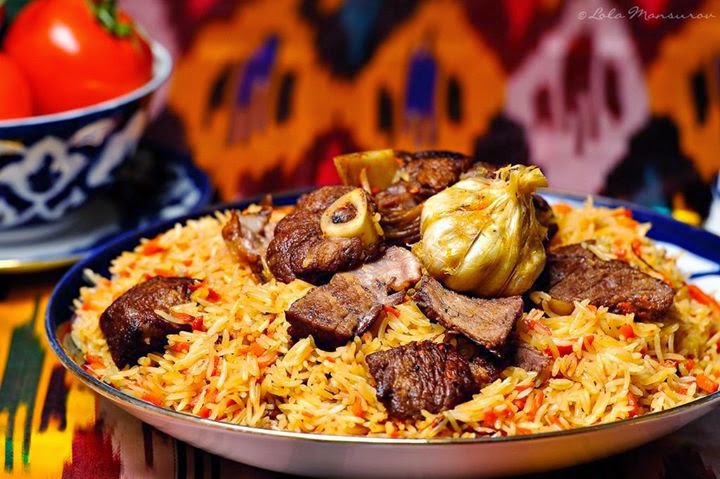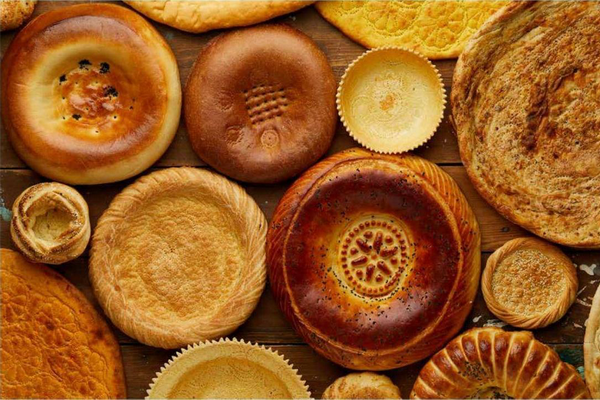The legendary city of Samarkand has been a magnet for traders, travelers and conquerors for centuries. Located in the Zarafshan River valley in Uzbekistan, this turquoise oasis still attracts today’s visitors who follow in the footsteps of Alexander the Great and mighty Timur. Reflecting its past as a cultural crossroad, this Silk Road stopover features buildings, gardens, fountains and other cultural treasures whose extraordinary beauty and success have inspired Islamic architecture across the region from the Mediterranean to India. Sky-blue mosques and sand-coloured minarets, fluted domes, madrasahs and monumental tombs, dazzling tile and mosaic surfaces with floral motifs and geometric patterns – a dazzling and extremely attractive effect, like a mirage in the desert.
For hundreds of years, the journey to Samarkand required the effort of Hercules. The arduous expeditions carrying goods between distant cities such as Xi’an and Shiraz marched on bactrian Bactrian camels across a scorched expanse roughly the size of Italy, through vast steppes, inhospitable mountains, and shifting sands like the Taklamakan Desert. .
Why? Why? What is hidden behind a barricade of mountains, grassland and sand to Samarkand that has lost people’s minds – and their lives – to the scorching heat, numbing cold, and howling winds? The answer is trade, because from the sixth to the thirteenth centuries Samarkand enjoyed an age of unparalleled prosperity. It has become Asia’s great showcase, one of the world’s best marketplaces, where everything from rare spices to yak-tail fly-beaters is exchanged and sold.
For centuries, Samarkand’s wealth has been legendary. Traders searched for sacks of rice and carrots from the Himalayas, cut sugarcane, bundles of lemons, braids of garlic, and sacks of soybeans from East Asia. On the Silk Road, exchange went both ways.
Traders found security in Samarkand in the form of shelter, dealers and brokers. Mercenaries could also be hired for further travel to fend off slave raiders and bandits. Long after the traders left their wares and the traditions remained in this oasis. Sogdian, the language of Samarkand’s intermediaries, became the language of the business world. This is a city that has been at the crossroads of food culture for centuries.
Modern-day Samarkand is no longer the legendary place it once was, but the journey to this incredible city is always exciting.
Plov – Uzbek Cuisine

The specialty dish of Uzbekistan is palov (plov or osh or palov, “pilaf”), which is the main course typically made with rice, pieces of meat, grated carrots and onions. It is usually cooked in a cauldron (or deghi) over an open fire; Chickpeas, raisins, blueberries or fruit can be added to diversify. Although usually prepared at home by the head of household or housewife for family and guests, palov is made on special occasions by the osh master chef who cooks the oshpaz, or national dish, over an open fire, sometimes serving up to 1,000 people. from a single cauldron for holidays or occasions like weddings. Nahor oshi, or “morning plov,” is served early in the morning (between 6 and 9 p.m.) to large gatherings of guests, often as part of an ongoing wedding celebration.
Dazzling bazaars, golden bread and a blanket of stars

When I first came to Samarkand in 2019, tired of exploring the Pamir Mountains, the atmosphere shook me. The landscape is filled with monolithic Soviet blocks, gigantic azure-domed mosques, and pale desert-coloured minarets. At street level, shambles of bazaars overflowed, sprout cauldrons bubbling along roadsides, and butchers shredded the edges of beef on logs used as cutting blocks. Melons the size of a horse’s head were tucked into the boots of Lada carriages, the fronts of the shops were adorned with dazzling ikat and suzani fabrics with pomegranate motifs, while legions of babushki (old ladies) pushed vintage baby carriages with golden hues, not meowing babies. bread discs. It’s like time travel, I said, repeating the words of the countless travelers in front of me.
At dawn, before the arrival of the pilgrims, while the imams were singing hymns, I wandered alone in the ethereal necropolis of Shah-i Zinda. That night I ate fresh bread in the tandoor and a juicy melon sliced with a jewel-handled knife under a blanket of stars. Could any other place in the world provide such a feast for the senses?
In the years that followed, I made about a dozen trips to Central Asia, Turkey, Russia and the Caucasus. On these adventures, I ate in mountain villages, city centers, by sparkling lakes and on the steppes. I ate borscht while playing backgammon with war veterans in Soviet-style canteens, slurped lightly spiced laghman (noodles) in dormitory cafes, and enjoyed unending hospitality in people’s homes. In the former Soviet Union it’s easy to eat well by avoiding ‘tourist’ restaurants; Hospitality is a cult in all these countries. It lubricates the wheels and is justifiably legendary. In Samarkand you can expect a genuine welcome for ‘the guest is the first person in the house’.
From Russian borscht to Turkish shawarma, I quickly discovered a wide variety of food cultures and prepared dishes that were familiar but not at first—like the ubiquitous plov and samsa, which resembled Persian rice. Like Indian samosas. I feasted on kingly fruit everywhere I went – all of which was always criminally cheap. The flavored apricots of Tajikistan’s Pamir Mountains, the famous golden peaches of Uzbekistan, and the lead-shaped grapes of Kyrgyzstan made me realize what we are losing to convenience in the West for convenience. Most of all, I discovered that this food culture crosses many borders, a bit like matryoshka, those shiny kitsch Russian dolls. As soon as you open one, the other reveals itself. And at the center of it all was Samarkand, which for centuries has been at the crossroads of food culture. As a mere city, its location is narrow, but its scope is extraordinarily wide.
Ref: From Samarkand by Caroline Eden and Eleanor Ford (Kyle Books)
Some top Eaten food items in Uzbekistan is.
- Suzma : It is a tangy yogurt cheese spooned into soups, mixed into salads, or eaten as a simple meal with bread and fresh tomatoes.
- Walnut-stuffed eggplant rolls: All over the Caucasus, people traditionally stuff eggplants with walnuts and pomegranate seeds to be pickled and preserved for the long winter months. This is a fresh version of the Georgian dish badrijani nigvzit that uses grilled eggplant instead, but with the same flavors.
- Spicy meatballs with adjika and yogurt: Adjika, literally ‘red salt’, is a spicy and fragrant chili paste originating from Abkhazia, a separatist region of Georgia. You will find it totally addictive.
- Non (Naan): Different cities and provinces all over Uzbekistan produce their own unique non – the word is Persian, pronounced nahn. It is usually cooked in the scorching clay walls of a tandoor oven. At home, using a pizza stone and oven set to maximum is the best way to achieve the characteristic chewy elastic texture.
